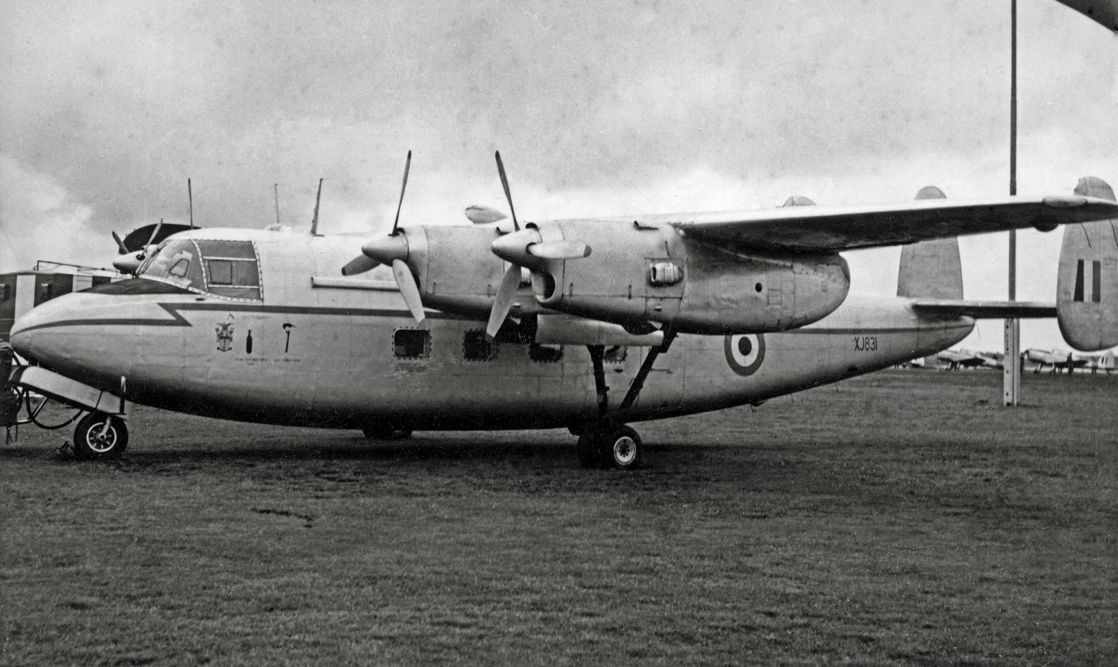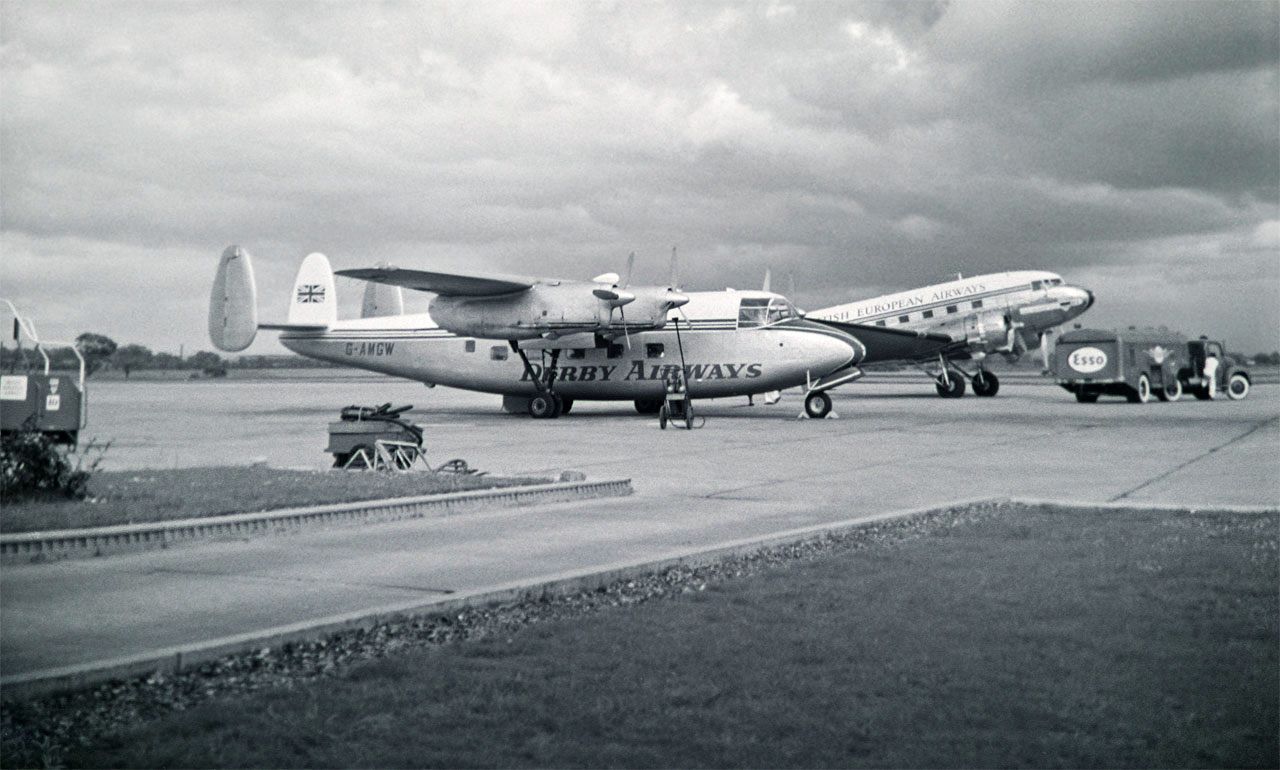Capable of seating up to 20 passengers, the Handley Page Marathon was a British-built four-engine civil transport aircraft. The plane was designed by Reading-headquartered Miles Aircraft but built by Handley Page at Woodley Aerodrome in Reading, England.
The concept was well-received when the plane was initially submitted to the British War Ministry as a 16,500 lb four-engine monoplane. After being approved for manufacture, various agencies argued about its specifications leading to multiple attempts to change the plane's design midway through the building process.
Handley Page buys Miles Aircraft Limited
These interferences delayed the manufacture of the aircraft and increased its cost to make. Delays over a firm order from the government for the aircraft eventually led to Miles Aircraft Limit declaring bankruptcy. Already involved in the project, Handley Page acquired all of Miles's assets and formed a company called "Handley Page (Reading) Limited" to continue work on the Marathon.
Despite being revolutionary and bringing forward many firsts, such as the aircraft's all-metal design and the fact that it was the first-ever plane to comply with the stringent International Civil Aviation Organization (ICAO) standards, it received a lukewarm reception from the airlines. British European Airways (BEA) bought seven Marathons but opted not to introduce them into its fleet.
The RAF used the plane to train navigators
In late 1952 the West African Airways Corporation took delivery of six Marathons but replaced than in 1954 with de Havilland Herons. The last three Marathons built were given enlarged fuel tanks and sold to Union of Burma Airways, who operated them in Southeast Asia for several years.
The Royal Air Force (RAF) turned out to be the plane's savior, using it as a navigation trainer. From early 1953, 28 Marathons were assigned to the No.2 Air Navigation School at RAF Thorney Island near Chichester, West Sussex. 16 other Marathons went to RAF Topcliffe in North Yorkshire when No.1 Air Navigation School relocated there in June 1958. By the spring of the following year, only eight aircraft were deemed airworthy.
Besides being mechanically unreliable, the aircraft has a maximum ceiling of 9,500 feet and a poor climb rate of 300 feet a minute. The last of the Marathon navigational trainers were retired by the RAF in April 1959 and ended up being scrapped.
The predecessor of British Midland Airways, Derby Aviation, acquired three Marathons in 1955 for UK domestic flights, including the Channel Islands. The planes were based at Burnaston Airport near Derby and were operational until being withdrawn from service in December 1960. Two of the former RAF planes were returned to Handley Page at Shoreham-by-Sea, where they were supposed to be used to fly between the south coast of England and the Channel Islands. However, this failed to materialize, and the planes were scrapped in 1962.
In September 1964, Handley Page sold one Marathon to King Hussein of Jordan, who planned to use the aircraft for his transport around Jordan and the neighboring countries.
Handley Page Marathon Specifications
General characteristics
- Crew: 2
- Capacity: 20 passengers
- Length: 52 ft 1.5 in
- Wingspan: 65 ft
- Height: 14 ft 1 in
- Wing area: 498 sq ft
- Empty weight: 11,688 lb
- Max takeoff weight: 18,250 lb
- Fuel capacity: 240 imp gal
- Powerplant: 4 × de Havilland Gipsy Queen 70-3 six-cylinder air-cooled inline piston engine, 340 hp
Performance
- Maximum speed: 233 mph
- Cruise speed: 201 mph
- Range: 935 mi
In total, 68 Marathon aircraft were built. The first variant, Marathon I, made up 40 aircraft, while the second variant, a military navigation trainer version, comprised the remaining 28.


.jpg)
